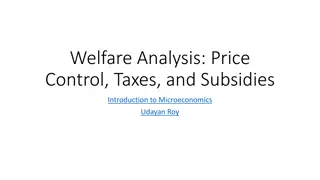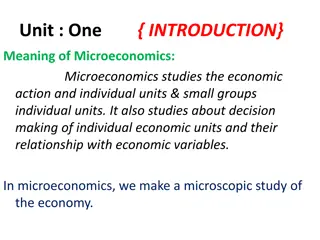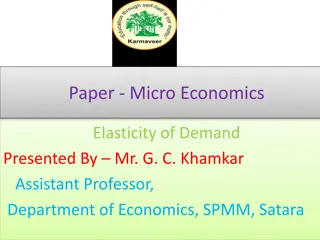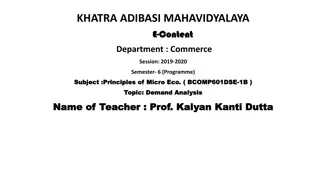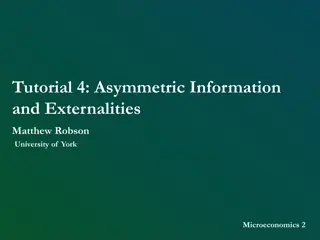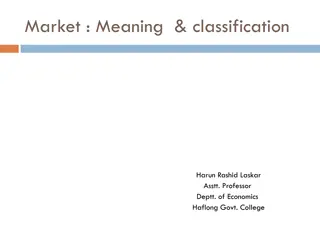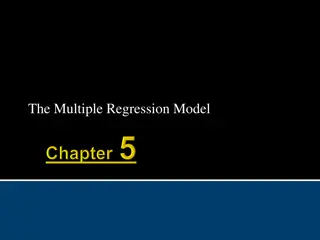Understanding the Cournot Duopoly Model in Advanced Microeconomics
The Cournot Duopoly Model, named after Augustin Cournot, is an economic model where competing firms independently choose quantities to produce simultaneously. It strikes a balance between monopoly and competition, resulting in stable Nash Equilibrium. While advantageous, it has limitations due to unrealistic assumptions. Explore more about this model and its implications in economic analysis.
Download Presentation

Please find below an Image/Link to download the presentation.
The content on the website is provided AS IS for your information and personal use only. It may not be sold, licensed, or shared on other websites without obtaining consent from the author. Download presentation by click this link. If you encounter any issues during the download, it is possible that the publisher has removed the file from their server.
E N D
Presentation Transcript
SEMESTER 4 SEMESTER 4 B.A (HONORS) ECONOMICS B.A (HONORS) ECONOMICS COURSE CODE: ECNHC401 COURSE CODE: ECNHC401 COURSE TITLE: ADVANCED MICROECONOMICS COURSE TITLE: ADVANCED MICROECONOMICS COURNOT DUOPOLY MODEL COURNOT DUOPOLY MODEL Prepared by Anindita Chakravarty Asst. Prof. ( Dept of Economics)
COURNOT MODEL It is named after its founder, French mathematician Augustin Cournot. Cournot competition is an economic model in which competing firms choose a quantity to produce independently and simultaneously. The model applies when firms produce identical or standardized goods and it is assumed they cannot collude or form a cartel. The basic Cournot assumption is that each firm chooses its quantity, taking as given the quantity of its rivals. Explanation of diagram will be given in a separate video for your better understanding
ADVANTAGES OF COURNOT COMPETITION The advantages. results, with prices and quantities that are between monopolistic (i.e. low output, high price) and competitive (high output, low price) levels. It also yields a stable Nash Equilibrium, an outcome from which neither player would like to deviate unilaterally. In the Nash equilibrium, each player's strategy is optimal when considering the decisions of other players- Game Theory Cournot model The has some produces significant logical model
LIMITATIONS OF COURNOT COMPETITION Some of the model s assumptions may be somewhat unrealistic in the real world. Firstly, the Cournot classic duopoly model assumes that the two players set their quantity strategy independently of each other. This is unlikely to be the case in a practical sense. When only two producers are in a market, they are likely to be highly responsive to each other s strategies rather than operating in a vacuum. The Cournot model assumes product homogeneity with no differentiating factors. French scientist J. Bertrand in 1883 attempted to rectify this oversight by changing the strategic variable choice from suitability of price, rather than quantity, as the main variable in oligopoly models subsequent research by a number of economists. quantity to price. The was confirmed in
THANK YOU STAY SAFE

 undefined
undefined









